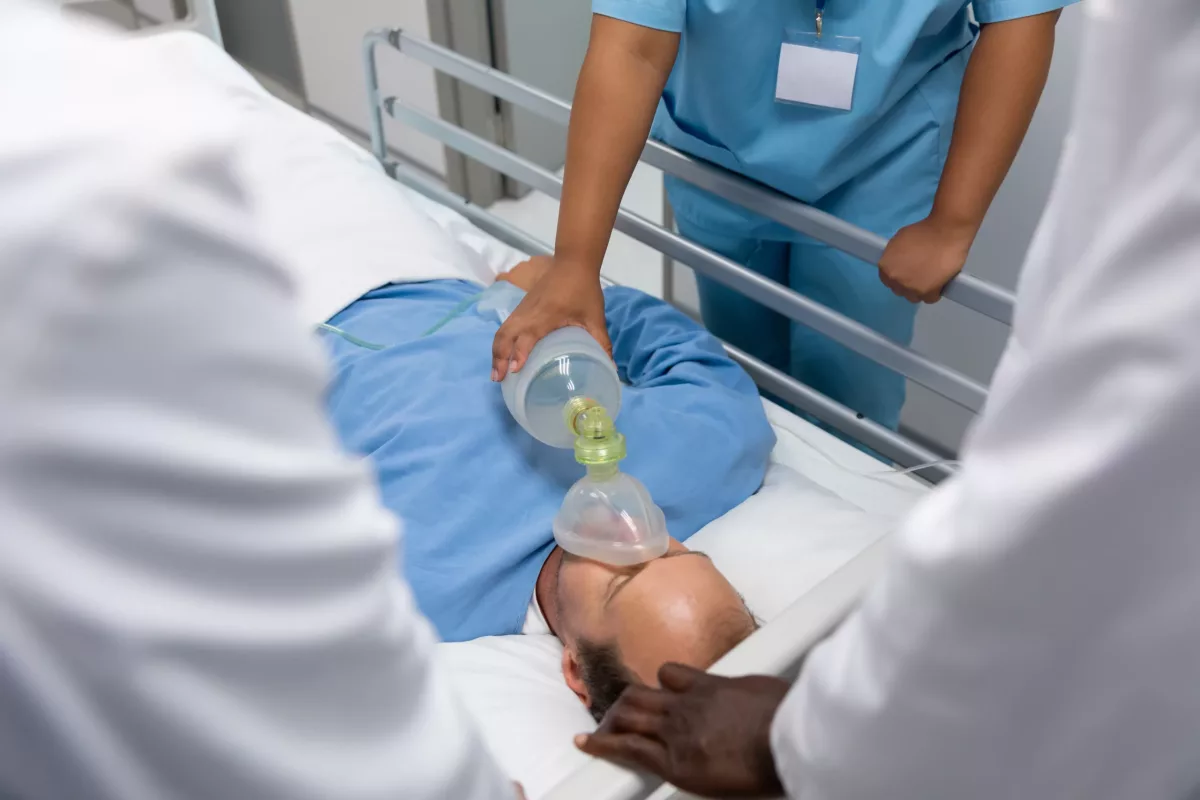A serious medical condition in which the immune system overreacts to an infection is called septic shock. It is considered one of the most severe stages of sepsis. In most cases, the immune system causes inflammation throughout the body, which may lead to extremely low blood pressure. In general, this condition can be fatal without immediate treatment. Physicians usually treat this condition with antibiotics, oxygen, and other medicines.
Many people do not make a difference between septic shock and sepsis. It is important to know that septic shock is the last and most severe stage of sepsis. Generally, sepsis is divided into 3 stages. For example:
- Sepsis – This condition occurs due to an overreaction of the immune system to an infection.
- Severe sepsis – People who develop a severe form of this condition may experience low blood pressure (hypotension), organ malfunction, and other life-threatening symptoms.
- Septic shock – This is the end stage of sepsis in which a person has extremely low blood pressure despite multiple IV fluids.
Symptoms
Usually, people who develop this condition experience the following symptoms. Check below some early symptoms:
- Chills
- Tremors
- Confusion
- Disorientation
- Fast breathing (hyperventilation)
- Shortness of breath
- Fever or hypothermia (low body temperature)
- Fast heartbeat
In severe cases, people may also experience other symptoms. Examples include:
- Skin rash
- Cool and pale limbs
- Palpitations
- Lack of urination
- Lightheadedness
- Extremely low blood pressure
If any of the previous symptoms occur, immediately go to the nearest emergency room or call 911.
Causes
Generally, any infection can lead to sepsis and then develop into septic shock. However, not everyone who gets sepsis develops septic shock. It often occurs when an infection causes enough inflammation. In most cases, infections are caused by bacteria, but viruses and fungi may also cause infections that lead to sepsis. While infections can begin anywhere in the body, most commonly they start in the bladder, stomach, or lungs.
Risk Factors
Physicians have determined that people who have a weakened immune system are more prone to develop septic shock. Check below who usually has a weakened immune system:
- Newborns
- Women during pregnancy
- Older adults (over 65 years old)
- People who administer recreational drugs
- Those who have artificial joints or heart valves
However, the immune system may become weakened during certain health conditions. For example:
- Autoimmune conditions
- Leukemia
- Lymphoma
- Diabetes
- HIV/AIDS
Moreover, people who have had recent surgeries, transplants, or medical devices are also at increased risk of developing sepsis.
What Are The Potential Complications of Septic Shock?
People who develop the end-stage of sepsis (septic shock) may also experience some life-threatening complications, especially if they do not get immediate treatment. Check below some examples:
- Kidney, lung, or heart failure
- Gangrene and amputations
- Brain damage
- Respiratory failure
- Disseminated intravascular coagulation (DIC)
- Mesenteric ischemia
- Increased risk of future infections
- Myocardial dysfunction
- Death
This article does not contain all possible complications of septic shock. However, you can consult with your healthcare professional about ways to reduce the risk or prevent these complications once you have developed septic shock.
How to Prevent Septic Shock?
Early diagnosis and proper treatment are essential in order to prevent septic shock. Getting antibiotics as soon as possible can prevent sepsis. You should also keep up-to-date with vaccinations. There are vaccines that help prevent some infections that could lead to sepsis and then septic shock. However, sometimes, septic shock cannot be prevented.
Diagnosis
Physicians often suspect sepsis when a person suddenly develops a fever or hypothermia, a fast heart or breathing rate, and hypotension. However, to confirm the condition, physicians may perform blood tests to check for:
- Infections
- Complete blood count
- Blood chemistries (such as lactate)
- Oxygen levels in the blood
- Organ function
In some cases, doctors may collect samples of your saliva, urine, cerebrospinal fluid, and other tissues for further testing. In addition, they can also perform some imaging tests to determine the source of infection. Examples include:
- Chest X-ray
- CT (computerized tomography) scans
- MRI (magnetic resonance imaging) scans
Treatment
People with septic shock need immediate treatment that is often given in an intensive care unit (ICU). It involves antibiotics to treat bacterial infection and intravenous (IV) fluids to prevent dehydration. IV fluids may also increase your blood pressure.
People with severe symptoms (such as shortness of breath) may receive a mask or a nasal cannula to receive oxygen. Some people may also need surgery to remove the source of infection. During this procedure, surgeons may also drain abscesses and remove dead or infected tissue.
When intravenous fluids do not increase your blood pressure, physicians may prescribe some medicines. For example, Norepinephrine, Vasopressin, and others. These medications are used to narrow blood vessels and increase blood flow to the organs throughout the body. However, if you do not notice improvements even after previous medications, doctors may recommend corticosteroids (medicines used to lessen inflammation). In some cases, septic shock may increase blood sugar levels. Therefore, healthcare professionals often recommend insulin.
Frequently Asked Questions
What is the survival rate of septic shock?
This condition is a severe and even life-threatening stage of sepsis. In general, the survival rate is low, but it depends on several factors. For example, your age, overall health, whether you have had organ failure, and how fast you get treatment. Those who do not get immediate treatment often die. However, with treatment, 30% to 40% die.
What is recovery like after septic shock?
Usually, many people recover after septic shock, but it may take time. For instance, the symptoms may last for months or even years. These long-term effects are called post-sepsis syndrome. Check below some examples:
- Mood disorders (including anxiety)
- Nightmares
- Flashbacks
- Weakened immune system
- Lack of appetite
- Sleep problems (insomnia)
- Fatigue (extreme tiredness)
Check below some tips that may help with recovery:
- Regularly visit your healthcare professional
- Adopt a healthy diet
- Aim for at least 30 minutes of physical exercise per day
- Practice healthy sleep
- Try to avoid future infections
When should I go to the ER?
Generally, if you experience septic shock symptoms, immediately go to the nearest emergency room or call 911. Ask your healthcare provider if you have additional questions.




